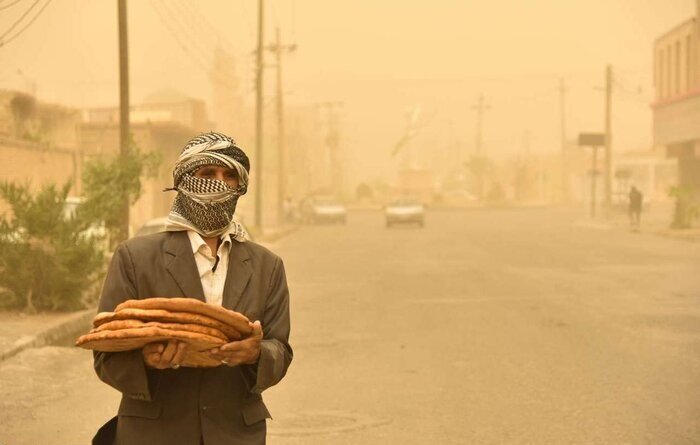INSUBCONTINENT EXCLUSIVE:
TEHRAN-- A 10-year strategy has been prepared to reduce internal hotspots giving rise to sand and dust storms (SDSs), Ali Salajeqeh, head of
the Department of Environment (DOE), has announced.Unfortunately, the desertification phenomenon is progressing in the nation and is
outpacing reforestation, he lamented.The internal dust sources are estimated at 34.6 million hectares, producing an average quantity of 4.22
million lots of dust per year.Based on the 10-year strategy, the relevant organizations are performing their tasks to suppress SDS effects,
he mentioned, adding that the Natural Resources and Watershed Management Organization must have the very first function in the plan, and the
Planning and Budget Organization ought to likewise wait the work.In July, Tehran played host to a conference of ministers and authorities
from 11 nations, intending to increase cooperation for solving extant ecological issues, specifically sand and dust storms.Environment
ministers of Iraq, Armenia, the United Arab Emirates, Oman, Syria, and Qatar, in addition to deputy ministers of Azerbaijan and Turkmenistan
together with delegations from Turkey and Uzbekistan, participated in the occasion which was held with the style of Environmental
Cooperation for a Better Future
SDS effectsThe SDSs phenomenon has been pestering the nation for a number of years and has caused issues in lots of provinces
According to specialists, natural and human aspects are associated with the incident and severity of this phenomenon which is mainly caused
by excessive consumption of water and drying up reservoirs.The internal dust sources are approximated at 34.6 million hectares, creating a
typical amount of 4.22 million tons of dust each year, about 1.460 million hectares are dried wetlands.Some 4.23 million tons of dust are
raised annually, which suggests the loss of soil fertility will hit the farming sector.All the SDSs sources are not situated in Iran, 300
million hectares in the neighboring countries are giving rise to SDSs, which transfer dust into Iran
The overall dust density is estimated at about 150 million tons.In truth, the dust is raised from Turkmenistan, Uzbekistan, Afghanistan, and
Pakistan in the northeast as well as Iraq, Syria, Saudi Arabia, and Jordan in the south, southwest, and west.Letizia Rossano, the director
of the Asian and Pacific Centre for the Development of Disaster Information Management (APDIM), stated in June that Iran is really at
leading edge of comprehending the issue of sand and dust storms in addition to dealing with it.More than 80 percent of the whole populations
of Turkmenistan, Pakistan, Uzbekistan, Tajikistan, and the Islamic Republic of Iran are exposed to medium and high levels of bad air quality
due to sand and dust storms, she noted.FB/ MG

